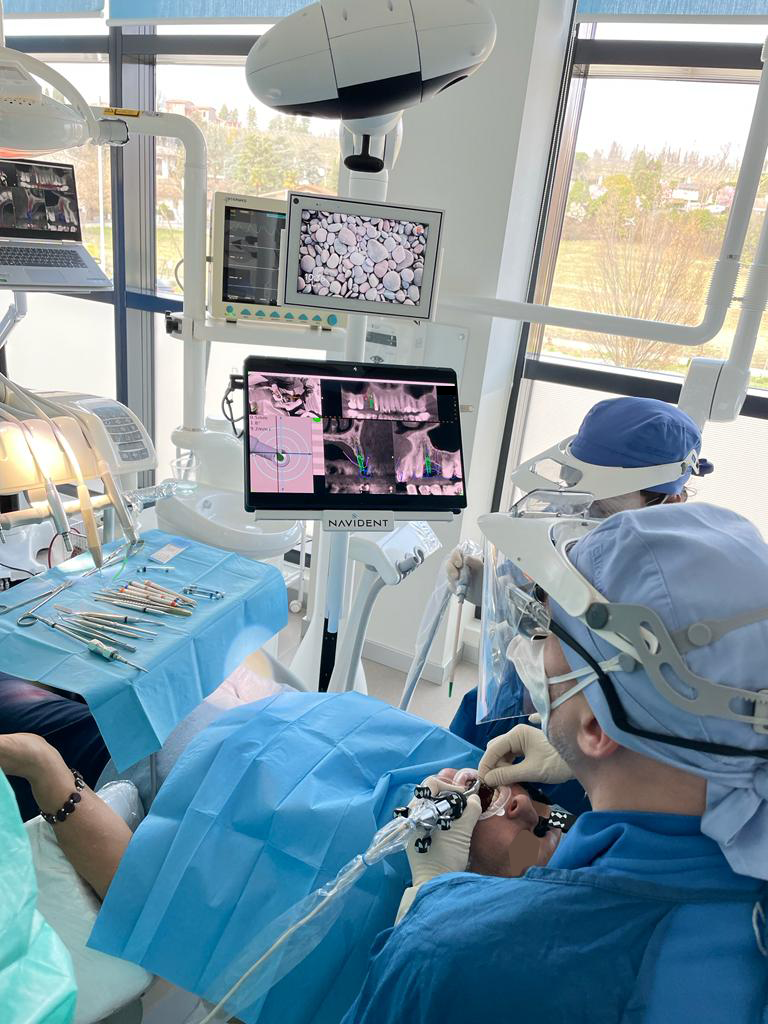Navident Testimonials
Navident EVO
After 6 months in the field — A Report
Long time Navident users explain the experience with Navident EVO and compare it with Navident UNO
Dr. Jacques Vermeulen
- How long have you been using Navident UNO and when did you receive your Navident EVO.
I started using Navident UNO in 2019, first occasionally and afterwards more systematically when I was fully up to speed with the protocol and technology. I was very satisfied with Navident UNO.
I received EVO in the beginning of 2023 and kept the UNO system for 3 months in my clinic as a precaution. I wanted to make sure that EVO worked perfectly and I was pleasantly surprised by EVO’s performance and the software’s user-friendliness.
95% of implant surgeries are now performed with EVO.
- What prompted you to buy the upgrade?
The technical improvements in EVO versus UNO, such as: impression registration, autoclavable parts that are smaller and lighter and especially the handpiece tracker which has no blank spots for the Navident camera – which was a major flaw on the Navident UNO.
The protocol for complete edentulous cases using impression registration, without the need for osteosynthesis screws, played a positive role in my decision.
Future developments in EVO also convinced me. The forthcoming (I hope) possibility of controlling the implantology engine and photogrammetric impression taking were also important factors in my decision.
- How many cases have you performed with each system? Estimated.
I estimate having carried out at least 150 clinical cases with Navident UNO, and to date I’ve carried out 70 clinical cases with Navident EVO. This translates in over 500 implants placed with Navident.
- What are your impressions of the improvements made to the EVO system? (Perhaps list and explain the first 3).
The EVO system is:
1/ speed and user-friendliness of the planning software. For example, with Navident UNO, I used to carry out an implant pre-study on Simplant and since I’ve got EVO, I’ve totally abandoned this pre-study. I now carry out the study directly on EVO.
2/ ease of STL matching, either from the optical impression or from a study of the prosthetic project by the laboratory. It only takes a few seconds!
3/ Impression registration eliminates the need for tracing (saving 1 to 2 minutes) and the need to place osteosynthesis screws in the case of the completely edentulous, or in the case of immediate implant extraction. (For the time being, I’m keeping the use of screws in my clinical practice, so as to be able to control accuracy during surgery).
- Do you have any suggestions for our development roadmap?
Obviously, EVO needs to evolve, and one of the simple suggestions I have would be to be able to generate a pre-op planning report with the implant specifications for each implant, to be handed over to the dental assistant and facilitate the ordering of implants. I currently print out a screenshot.
– Generate a post-op report at the end of surgery.
– Evolve “Evalunav” with photogrammetry to avoid a 2nd irradiation of the patient (highly contested by the scientific world).
– Implement implant motor assistance and photogrammetry rapidly.
– Enable the use of augmented reality glasses during surgery.
– Placement assistance, either with a system like “Yomi” using a robotic arm to block the axis, or with a tactile feedback system such as we have on car steering wheels to secure the axis.
– For the time being, Navident remains a dependent practitioner! This is an advantage, but also a disadvantage for the future.
- Would you recommend it to a colleague and why?
I would simply say that the future lies in dynamically guided surgery! Implant placement without planning and dynamic assistance would be like driving a car without GPS, airbag or a braking assistant. The time lag between planning and dynamic guided surgery is negligible.
24 years ago, when I tried to convince my colleagues that the use of a static guide would be the future, I was preaching to the choir. Today, ALL young practitioners use static guidance…! In fact, they’re 20 years behind the times …!
Today, we need to invest in dynamic guidance, which allows a rapid transition from planning to surgery and avoids the use of highly polluting and expensive resins. Partial robotization of implant placement will soon become an obligation.
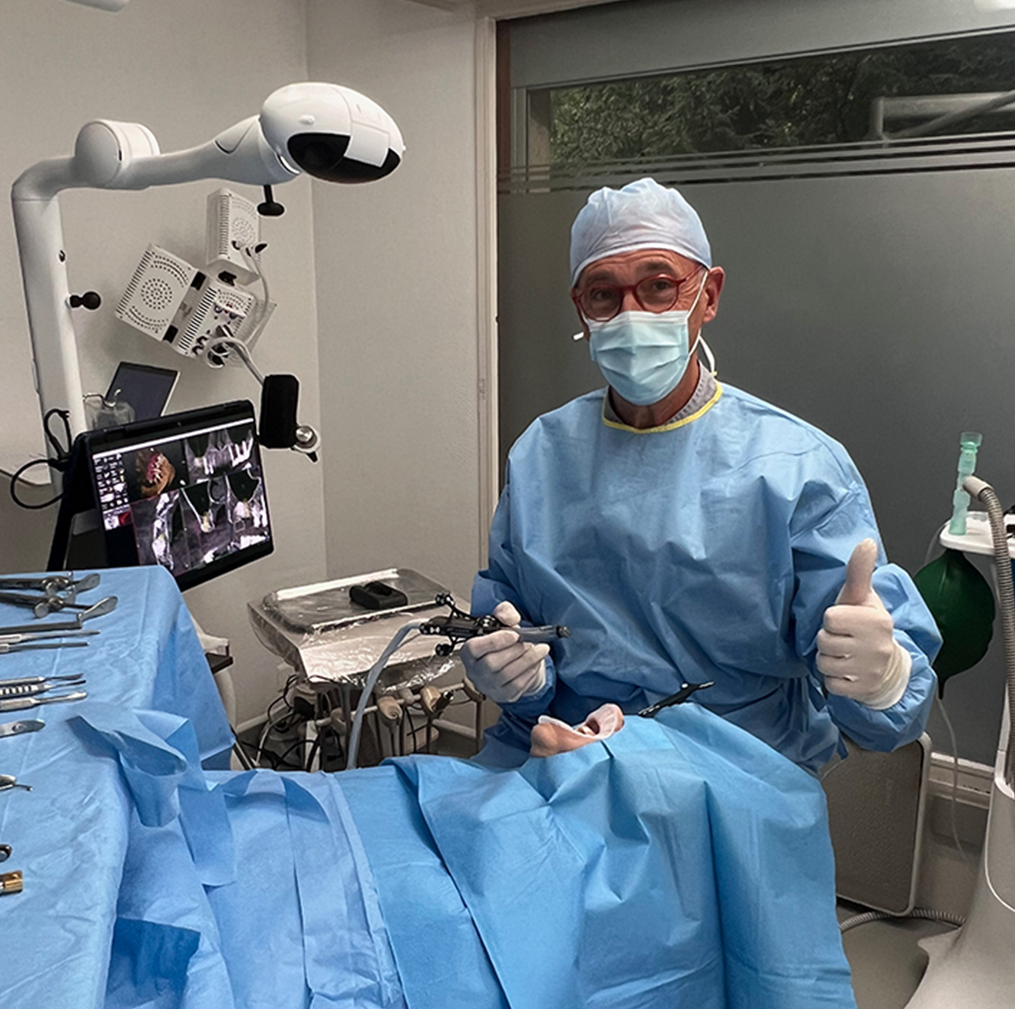
Dr. Mohamed Fayad
1. How long have you used Navident UNO user and when did you receive your Navident EVO
I have used the UNO for close to 2 years
2. What led you to make the upgrade purchase?
The updated registration procedure, robotic camera and the newly 360 designed drill tags
3. How many cases have you done with each system? Estimated.
UNO close to 50 cases. EVO 10 cases
4. What are your impressions of the improvements in the EVO system? (Perhaps list and explain top 3)
– Simple registration
– Robotic camera that can easily see the drill tags and jaw trackers
– Newly designed 360 drill tags
5. Are there any suggestions you have regarding our development roadmap?
– Improve the quality and resolution of the imported Dicom images. It gets saved in raw format which compromise the resolution in Endodontic applications as identification of calcified canals.
– Work on parallel of the cursor with the dicom images which is a basic function to navigate a dicom image. This function is available in every CBCT software and is very important.
– Improve the bony lid planning and screen orientation during the procedure.
6. Would you recommend to a colleague and why?
I totally agree to recommend this Evo to colleagues as it has added a different dimension to my practice and has made very challenging cases less time consuming
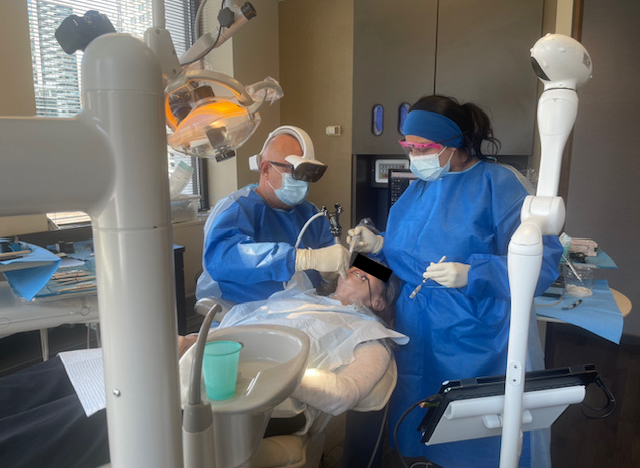
Dr. Silvia La Rosa
My excitement grew after receiving the EVO system on April 21, 2023, and opening the software. I was fascinated by watching the auto-tracking MT4 camera follow the optically marked trackers and the drill tag that now appears like a rocket launching into another stratosphere. I no longer be challenged, especially in the maxillary cases, given the 360-degree tracking capabilities.
Since I started using computer navigation, this technology has continued making giant leaps forward. It has evolved and elegantly, effectively, efficiently. The system’s new look is sleek and modern.
The new auto aiming/auto-tracking cameras are 3X faster than their predecessor with sharper accuracy of up to 350 microns, detection of tiny optical markers on the smaller, lightweight, reusable parts, and 360 drill tracking.
A new and additional form of registration called Impression registration reduces the surgical time as the computer automatically registers the patient’s jaw to the CBCT; Adding instant registration, you can now register in 3 ways: TaP, Point Pair, and impression registration. The speed of registration, which shows imperceptible lag, moves faster than with its predecessor, reducing the procedural time and simplifying what, as a clinician, was the most time-consuming phase of all computer-navigated cases.
An additional feature, Roboguard, can halt the Navigation if the deviations are greater than the ones preset by the clinician. Great for those initiating the journey with Navigation who are getting used to hand-eye coordination and becoming familiar with the technology.
Computer Navigation has assisted me in obtaining accurate results reproducibly and predictably over the years. With its new system, I can optimize the results while I have been able to reduce the procedural times. In areas where access is difficult (limited opening or posterior cases), the space is limited (lateral incisors), or there is proximity to critical anatomical structures such as the IAN, or in partial extraction therapy procedures locating the apex of the teeth and accurately removing it without damaging the adjacent alveolar structure then placing the implant respecting the socket shield, I can trust the reproducible accuracy of the technology.
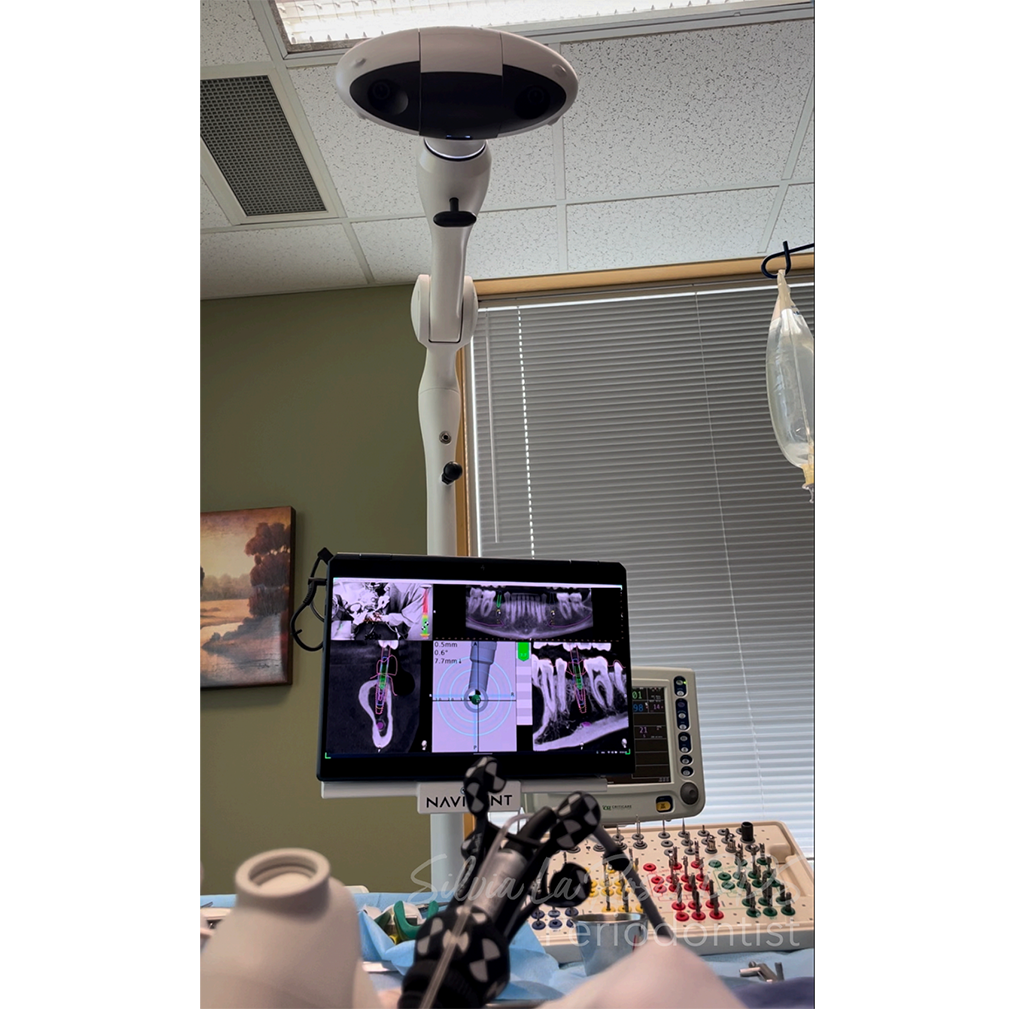
Dr. Marc Miller
1. How long have you been using Navident UNO and when did you receive your Navident EVO.
Navident uno since Aug 2019. Navident evo since May 2023
2. What prompted you to buy the upgrade?
More efficient workflow with enhanced camera system (increased accuracy, ability to automatically track handpiece/larger working field during surgery)
3. How many cases have you performed with each system? Estimated.
300+ with uno
20+ with evo
4. What are your impressions of the improvements made to the EVO system? (Perhaps list and explain the first 3).
Maxillary surgeries significantly enhanced workflow efficiency with new bite registration not requiring tracer calibration. Camera can track handpiece automatically outside of the typical surgical field of previous version. Enhanced workflow with bite registration for
Mandibular cases because no longer having to bond a wire then remove bonding once case is finished. Size of new camera fiducials is smalller and less bulky easier to work with.
5. Do you have any suggestions for our development roadmap?
Continue to improve efficiency of workflow, increased accuracy, faster software/hardware real time feedback, ability to see around interferences of surgical assistant or Doctor.
6. Would you recommend it to a colleague and why?
Yes for specialists who have placed implants before and who can recognize when things aren’t calibrated correctly based on previous experience and similar cases.
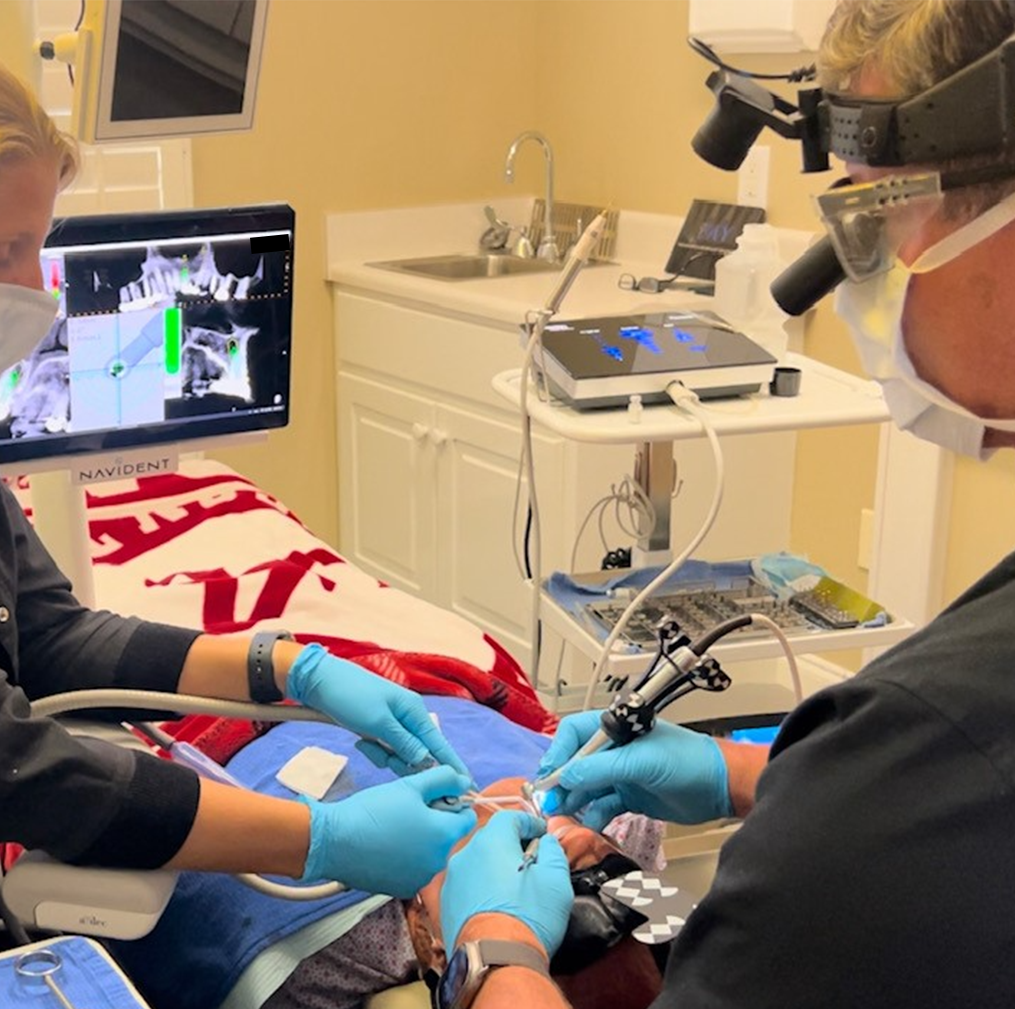
Dr. Luca Comuzzi
- How long have you used Navident UNO user and when did you receive your Navident EVO.
Navident PRO for four years
Navident EVO from Jan 2023
- What led you to make the upgrade purchase?
Since I am a MCT I wanted to provide the ultimate experience in technologies to my colleagues
- How many cases have you done with each system? Estimated.
Navident PRO # 100
Navident EVO # 30
- What are your impressions of the improvements in the EVO system? (Perhaps list and explain top 3)
Latency between my handpiece movement and the screen vision, has improved.
Trackers size reduction
Tracking works even if the optical target is partially covered, better maintaining connection.
5. Are there any suggestions you have regarding our development roadmap?
Photogrammetry for implant positioning
SCOPEYE view and magnification (METASCOPE) integrated.
Photogrammetry for dynamic occlusion registration
- Would you recommend to a colleague and why?
Yes. Augmented reality and semi-robotization are the directional view of oral surgery.
Last but not least, a beautiful design.
